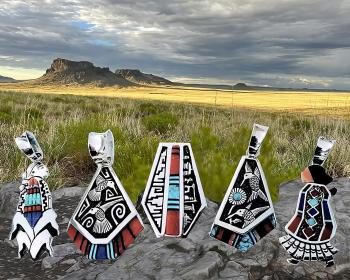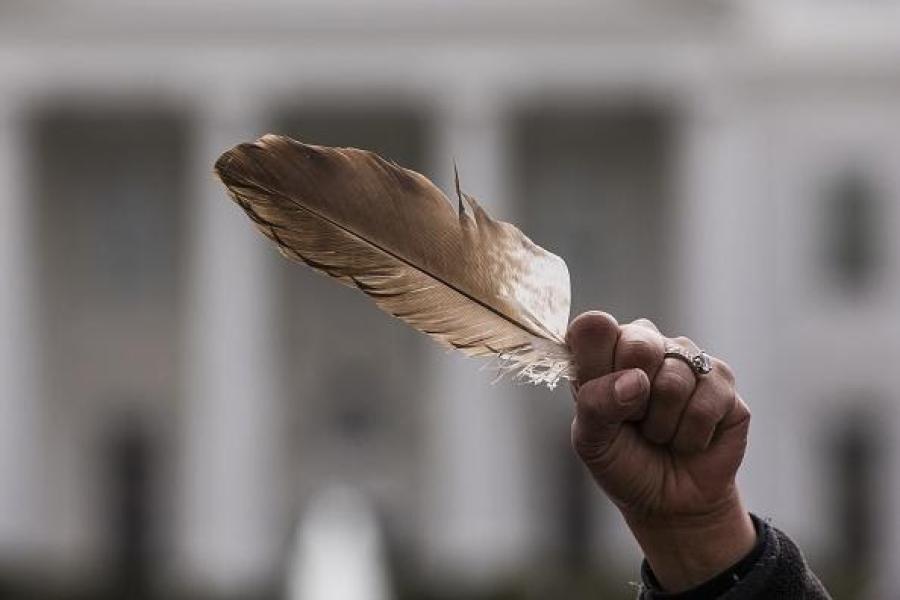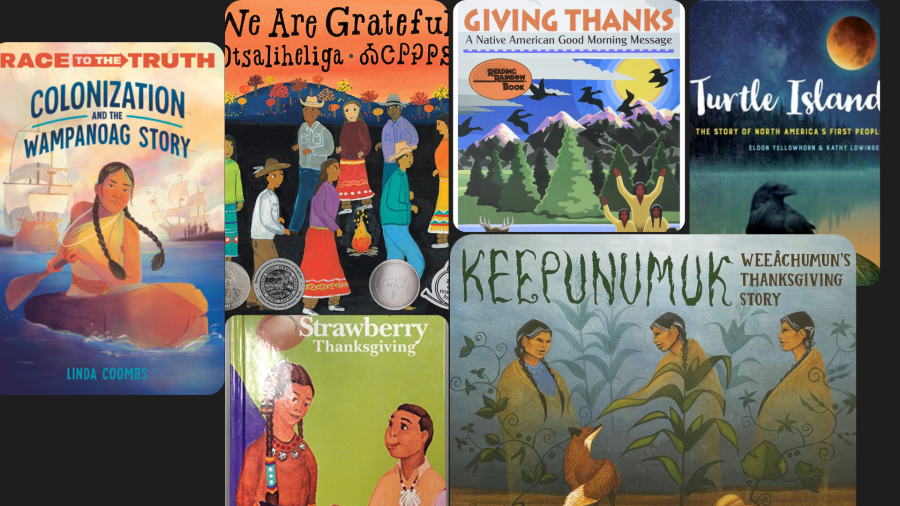Last month I took the arrival of “Big Winter” as an occasion for exploring seasonal divisions in cokv-walv Mvskoke (the Mvskoke calendar) This time-honored calendar synthesizes the astronomical and ecological knowledge our agrarian forebears found to be useful. Based on evidence from the Mvskoke language, from Muskogean oral tradition, and from other Indigenous and scientific calendars around the world, I suggest that the traditional Mvskoke calendar recognized only three seasons: meskē (summer), rvfo (winter), and tasahcē (spring).
Yet the most compelling evidence for a three-season year may be present in the calendar itself, in the naming and arrangement of the twelve hvse (months). This unmistakable pattern can be made apparent by considering the current month. The name was formed by modifying the word “rvfo” (winter) with a contraction of the noun ecuse, “his/her younger sibling of the same sex.” (To put this another way, “ecuse” can mean either “his younger brother” or “her younger sister,” depending on the gender of the older sibling.)
So the seventh month of the Mvskoke year is Rvfo ‘Cuse, which has been rendered in English as “Winter’s Younger Brother” since the earliest written account of Mvskoke months, in 1791. (This designation also implies that winter is male in Mvskoke country, though that information gets lost in translation.)
Like other months in cokv-walv Mvskoke, it has a counterpart in the annual cycle—in this case, the previous month: Rvfo-Rakko, “Big Winter.” Along with Big Winter and his younger brother, the yearlong sequence also includes Little and Big Harvest, Little and Big Chestnut-Thrashing, Little and Big Spring, and a pair of hvse named for edible fruits: Mulberry and Blackberry.
You might even say that the calendar incorporates an intermediate unit of time, longer than a month but shorter than a season, a kind of double-month or half-season. This strikes me as an unusual way to track the passage of time, with no clear basis in natural phenomena. And I have come across only one other American Indian calendar organized around this distinctive practice. The traditional Mohawk calendar comprises six pairs of complementary months: Cold and Big Cold, Lateness and Much Lateness, Budding and Big Leaf, Ripening and Much Ripening, Freshness and Much Freshness, and Poverty and Much Poverty. The pattern of repetition is even more obvious in the original language.
It seems unlikely that our Mvskoke ancestors would have borrowed this scheme from the Mohawks, who speak an unrelated tongue and live in a much cooler climate. So what is the significance of this dyadic structure, these coupled hvse? We should bear in mind that every system of timekeeping has a cultural dimension. Any calendar is a human invention; there is always a subjective aspect to the human gaze. Simply put, no description of nature can be completely natural. Objectivity remains beyond our grasp; what matters is usefulness—not just in a practical sense, but also in symbolic terms, as a real expression of meaning and value. While it may be based on astronomical and ecological observations, cokv-walv Mvskoke is also deeply rooted in a particular worldview. And a prominent feature of that worldview, some would say, is the provisional dualism evident throughout traditional Mvskoke culture.
This conceptual orientation is highlighted in a recent book on Mvskoke traditions by Jean and Joyotpaul Chaudhuri. A Sacred Path: The Way of the Muscogee Creeks explores “the Creek mind,” explaining how dualist thinking functions in every area of Mvskoke life: cosmology, oral tradition, politics, subsistence, gender relations, and elsewhere. The many twin stories, for example, present two boys with divergent personalities, whose actions dramatize “the need for balancing the diversity of human qualities so that out of the sharing of reciprocal but empirically different energies the unity of the spirit and the community would occur.” One version of the Corn Woman story teaches, among other things, “the shared cycle of human and natural energy” and the “partnership” between corn and beans that helps maintain nutritional balance.
Whereas dualism in the Western intellectual tradition typically involves two principles that are opposed and irreducible, Mvskoke dualities are ultimately resolved in the unity of nature and of Epofvnkv, the universal source of energy. And so it is that the complementary months of cokv-walv Mvskoke express a cultural commitment to harmony and cooperation, especially in the context of a three-season year. Summer solstice may signal the end of one year and the beginning of another, but marking seasonal change according to the other astronomical turning points would break apart three pairs of coupled hvse: fall equinox occurs at the transition from Little to Big Chestnut-Thrashing; winter solstice separates Big Winter from his younger brother; and spring equinox divides Little and Big Spring.
Observing three seasons of four months each, however, only enhances the order and balance of this elegant calendrical system: meskē, “summer”—Little and Big Harvest, Little and Big Chestnut-Thrashing; rvfo, “winter”—Frost, Big Winter and Winter’s Younger Brother, and Wind; and tasahcē, “spring”—Little and Big Spring, Mulberry and Blackberry.
Altogether it is a memorable formulation of Mvskoke environmental wisdom.
James Treat writes a monthly column for Mvskoke Nation News (http://mvskokecountry.wordpress.com), from which this article is adapted. He also teaches Indigenous ecology and religion at the University of Illinois. He can be reached by e-mail at treaty@illinois.edu



